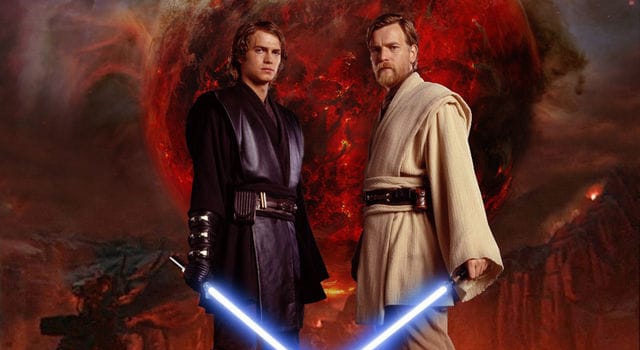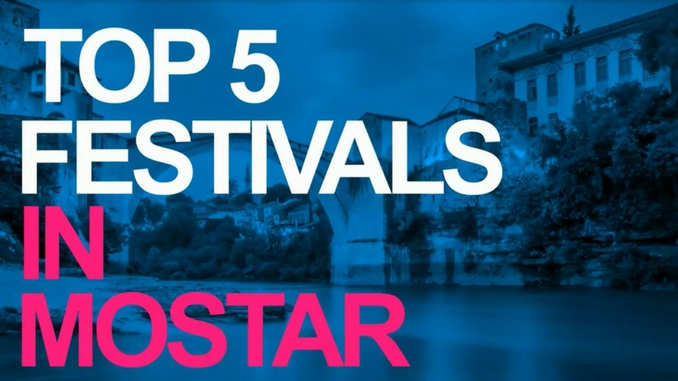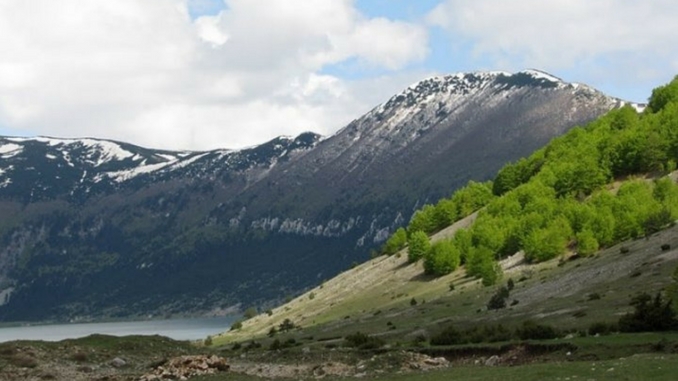[wp_quiz id=”4239″]
Do you think you are a true Star Wars fan?


[wp_quiz id=”4239″]

Promoted by the socialists, communists or anarchists 1 May was chosen to be International Workers’ Day in order to celebrate the economic and social achievements of workers. On one hand, 1 May is known for welcoming the spring and for flowers. On the other hand, it is a celebration of laborers.
The date was chosen for International Workers’ Day by a pan-national organization of socialist and communist political parties, to commemorate the Haymarket affair, which occurred in Chicago on 4 May 1886.
How did that happen?
The May 1, 1886, labor action wasn’t just any strike—it was part of what became known as the Haymarket affair. On May 1 of that year, Chicago (along with other cities) was the site of a major union demonstration in support of the eight-hour workday.
Here’s how TIME summed it up in 1938:
A few minutes after ten o’clock on the night of May 4, 1886, a storm began to blow up in Chicago. As the first drops of rain fell, a crowd in Haymarket Square, in the packing house district, began to break up. At eight o’clock there had been 3,000 persons on hand, listening to anarchists denounce the brutality of the police and demand the eight-hour day, but by ten there were only a few hundred. The mayor, who had waited around in expectation of trouble, went home, and went to bed. The last speaker was finishing his talk when a delegation of 180 policemen marched from the station a block away to break up what remained of the meeting. They stopped a short distance from the speaker’s wagon. As a captain ordered the meeting to disperse, and the speaker cried out that it was a peaceable gathering, a bomb exploded in the police ranks. It wounded 67 policemen, of whom seven died. The police opened fire, killing several men and wounding 200, and the Haymarket Tragedy became a part of U. S. history.
In 1889, the International Socialist Conference declared that, in commemoration of the Haymarket affair, May 1 would be an international holiday for labor, now known in many places as International Workers’ Day.
Stand up for your rights-and the rights of all workers!
Why do we celebrate it?
The International Workers Day or May 1 is celebrated to keep an end point for the struggles as well as to promote the requirements of eight hour working day. In earlier days the working time to the laborer is very severe and working hours are nearly 10 to 16 hours in a day also in the unsafe conditions. Deaths, injuries and other unfair conditions in the workers are very quiet common at the workplaces from the 1860’s and working people are very agitated in working throughout the day until the eight hours workday was declared.
This was the main agenda of the workers struggle:
How International Labour Day is celebrated?
International Labor Day is celebrated yearly as an official holiday all over the world- People enjoy celebrating the May Day or Labour Day by arranging the big party and lots of programmes. They decorate the banners and flags using colors just like an Independence Day celebration.
Variety of news and messages are distributed by the TV channels and radio channels saying Happy Labor Day among people to increase social awareness about the Labour Day. Variety of other events is also organized by the International Labour Organization to celebrate the day. The theme of the Labour Day party celebration becomes any cartoon characters, western culture shows, sports, TV shows, movies, holiday activities, crazy fun activities and many more. Other Labor Day activities includes crossword puzzle, anagram puzzle, word search puzzle, code cracker puzzle, word scramble puzzle, phrase matching game puzzle and etc.
This celebration has become a historic significance all over the world and celebrated by the Labor unions worldwide. Variety of demonstrations, speeches, protests processions, rallies and parades are organized by the working group people under the security arrangements to protect violence.

How do we celebrate it in Bosnia and Herzegovina?
In Bosnia and Herzegovina, 1 May is an official holiday at the national level. This day most of people from Bosnia and Herzegovina celebrate by visiting natural parks or resorts with family and friends. In Bosnia and Herzegovina, May is Barbecue month. It is the start of the outdoor cooking season for most of people. Here in Mostar, where we cook outdoors all year long, 1 May is a opportunity to prepare our favorite dishes while enjoying the outdoors with our family mainly on the river Neretva or Buna.


Festival season is not limited to the summer season with popular events taking place throughout the year. With so many festivals to get involved with, here are five top tips for bringing your brand, business or yourself to festivals in Mostar:
Mostarsko proljeće is designed in an effort to enrich cultural scene in Mostar. It is a rich program of cultural events which covers musical concerts, theater and puppet play, book and film nights, poetry reading and such.
Mostar Blues & Rock Festival has grown into a respectable event that has found a way to maps of European festivals and is one of the most significant festivals in this region.
Mostar Film Festival is cultural manifestation where the audience has an opportunity to enjoy in movies, documentary, student program and such.
Street Art Festival – The art skills of artists that interact with mostly urban environments to express themselves, are fascinating. Mostar is one of those street art galleries in the world.
Mostar Summer Fest – Celebrating urban culture and music, the city of Mostar each summer attracts attention with the Mostar Summer Fest. One of its goals is to become a platform for having a good time and fun.

Path: Motel Hajdučke vrleti – Veliki Vran (2074 m.a.s.l.)
Mountain: Vran
Difficulty: Medium
Mine Risk: None along the marked route
Duration: 2,5 h
GPS start coordinates: N43° 39.195’ ; E17° 32.027’
Altitude difference: 870 m
GPS peak coordinates: N43°40.089’ ; E17°30.336’
Water Supply: spring „Hajducko vrilo“ 1,5 h from the motel Orientation
Difficulty: None
Total length: 4 km

Going from Jablanica through the picturesque canyon of river Doljanka, road seemingly leading to nowhere, upon the arrival to the saddle of Sovićka vrata suddenly transforms into a spectacular vedute of mountainous landscape. Plateau Dugo polje is bounded by the mountains Čvrsnica on the southeast and Vran on the northwest and it offers idyllic atmosphere of mountain resort, both in summer and winter. Since 1995, the plateau and surrounding mountains were incorporated into a Nature Park Blidinje. Shallow lake Blidinje is placed on the southwestern side of the plateau, opposite to the Sovićka vrata saddle, with the peaks of surrounding mountains mirroring themselves on the surface. One of those peaks is Veliki Vran (2074 m.a.s.l.), the highest peak of Vran which forms western boundary of Dugo polje. Vran is not a typical Dinaric mountain. One of the facts to suggest this is the direction of the mountain which spreads from southwest – northeast. Ascent to Vran is particularly suitable for recreational hikers, whereas south and southeast allow passage through the richness of the karst landscape.
The starting point is placed in Trnovac, two kilometers after the crossroad in Blidinje in direction of Rama. The beauty of the landscape increases with the ascent. After the first steep part, one can find a valley with water reservoir constructed during the times of AustroHungarian Monarchy. The name confirms it: „Carska lokva“ or „The Emperor’s Pond“. Well marked path continues through the belts of mountain pines, beech forest and grass. In the summer, mountaineers are recommended to rest in the thick shade of pines. Before the arrival to Veliki Vran, the path passes through the thick pine forest somewhere mottled with barren land. The peak of Veliki Vran is marked with the pile of rocks, and as the reward for the successful ascent, the mountaineers have the fantastic view of three surrounding lakes: Ramsko, Buško and Blidinjsko.


The culture of wine growing and wine production in Bosnia and Herzegovina dates back to the Illyrian period and the Thracians who introduced grapevine seedlings to the Balkans. Warm Mediterranean climate and excellent natural conditions perfectly fit wine making industry in this country, especially Herzegovina region. With its long tradition, over 2000 years, this region is the home to some strong and quality wines from autochthonous Blatina and Žilavka grapes, and several non-autochthonous varieties grown in sunny and warm lands of Bosnia and Herzegovina.
Blatina is autochthonous grape, cultivated in plantations with other varieties such as Allicante Bouschet, Merlot, and Trnjak and provides high-quality red wine of dark ruby color, particular and characteristic aroma with full and rich harmonious taste.
Second autochthonous grapevine, Žilavka with its fine veins visible from the yellow-green and thick skin in a period of full maturity of the grapes in the berry, gives an excellent white wine with particular fragrance, and strength typical of southern wines.
Local winemakers have a lot to offer to those enjoying a glass or two. Selection of bottled red wine ranges from Blatina, made from pure Blatina grapes; Blatina Barrique, aged in oak barrels for at least 2 years: Emporia Blatina, mixed with Alicante Bouschet and Vranac; Romanca, refined, semi-sweet red wine, made of Blatina, Vranac and Cabernet Sauvignon grape varieties; Hercego Vranac, Vranac Baroque and Plavac, with its dark red color and pronounced aroma and refined taste. Trnjak, strong and characteristic wine with ruby red color and robust taste; Tribunia Red, made from Cabernet and Merlot variations adorned with fruity accent and richness.
Oenologists claim that Žilavka is the brand that King Tvrtko drank with his entourage back in 13 century. Light yellow in complexion with greenish reflection it’s the staple white wine in Bosnia and Herzegovina, among others, there are Emporia Žilavka, made with addition of Bena grapevine sort; Žilavka Barrique, aged for two sec years in oak barrels, Kameno, stone wine made from Žilavka grape grown in harsh karst soil; Tvrtko, made from overripe Žilavka, with glowing golden color and ripe and massive aroma. Hercego Žilavka, high-quality dry wine with pleasant flavor and a taste that gets its fullness from a high extract; Romanca White, a delicate semi-sweet wine with fruity flavor; Traminac, golden- amber colored sweet wine, and Graševina, strong stone wine with discrete fruity flavor and characteristic scent.
There are also rose wines, but not heavily represented; Rosary characterized by the crystal clear pink color. Well balanced, harmonious and full of flavor accompanied with a pleasant fresh scent of raspberry, currant, strawberry and cherry; Rosse, Rosse Barique and Tribunia Rose.
Studies carried out have shown that the best varieties in Europe, and even some oriental ones, were not as quality and drinkable as Žilavka and Blatina, which are used to produce wines before mentioned.
The golden age of viticulture in Bosnia and Herzegovina began by the revival of wine-growing, which was done by the Habsburgs in the area of Herzegovina. Since then, local winemakers received more than twenty-two gold medals, some of which were awarded to them by Emperor Franz Joseph, the Belgian King Leopold and Queen Victoria. Also good to know is that Zilavka and Blatina received “Medaille de Platte” in 1929 and in 1937 “Grand prix” rewards.